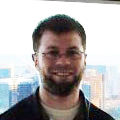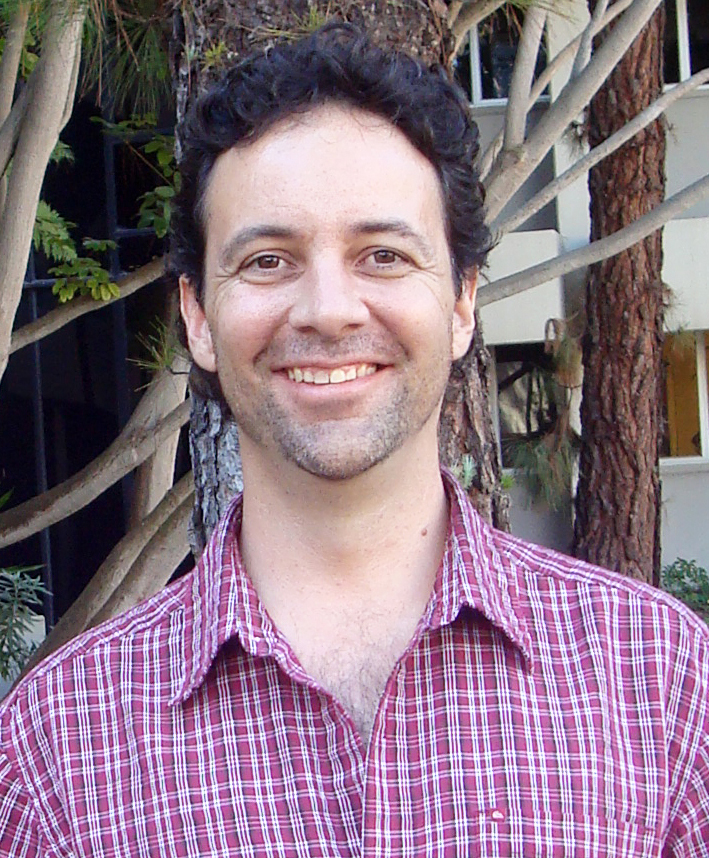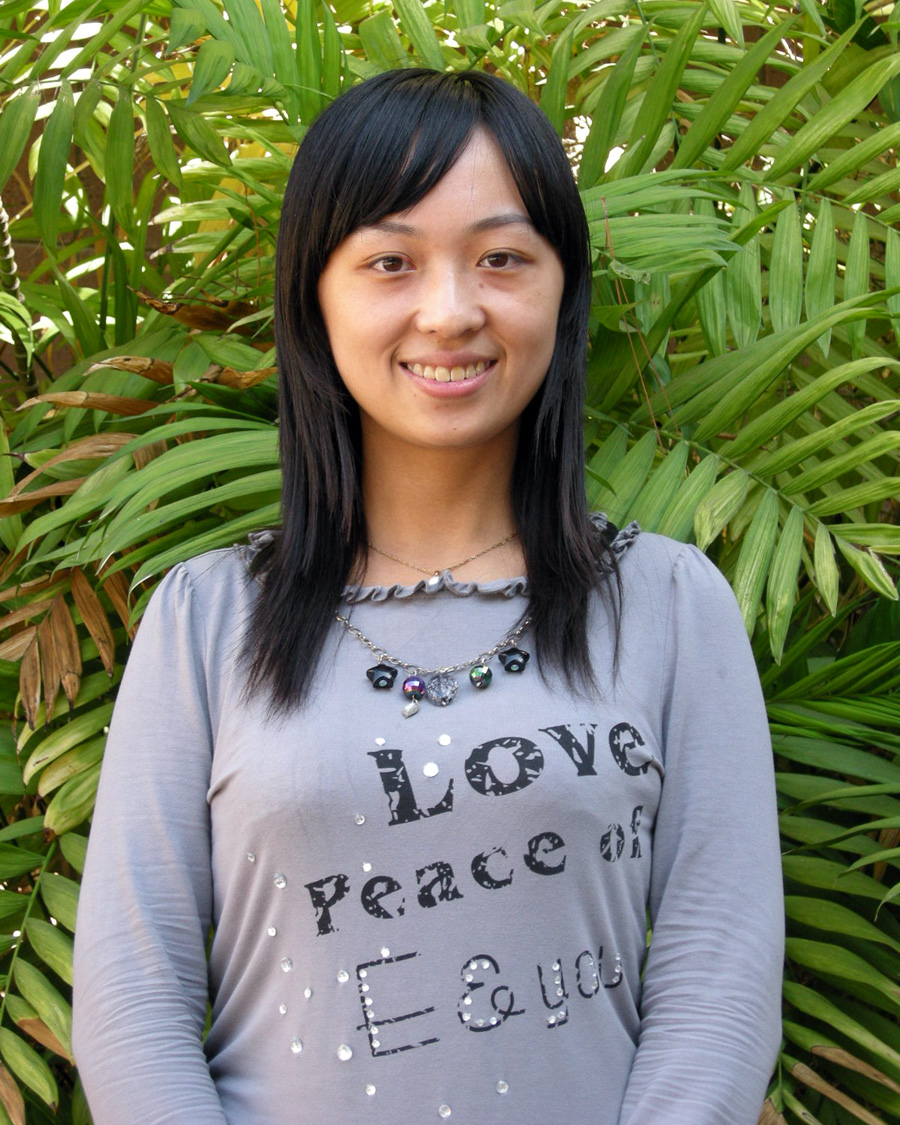The editor jumped the gun by announcing the Dangermond Travel Awards for Winter 2011 in the February 22 article, insofar as five more grad students beat the February 28 deadline and have also been awarded Dangermond Travel Stipends this year. The funds are used to enable students to present GIS-related work at conferences and workshops, and the following grad students also are to be congratulated:
- Guofeng Cao for a presentation of “A Computer package for modeling, prediction and simulation of regionalized categorical data” at the AAG Annual Conference in Seattle this April: “Regionalized categorical data, such as land use classes and socio-economic statistics data are important data sources in geographical information science (GIS). Careful investigation of spatial patterns implied in these data can benefit many scientific fields, such as classification of spatial data, spatial data mining and spatial uncertainty modeling. In this paper, we present a novel probabilistic method for modeling the posterior probability of class occurrence at any target location in space given known class labels at source data locations within a neighborhood around that prediction location. In the proposed method, spatial transition probabilities (transiograms) rather than indicator covariances or variograms are used as measures of spatial structure and the conditional or posterior (multi-point) probability is approximated by a combination of pre-posterior (two-point) transition probabilities, while accounting for spatial interdependencies often ignored by existing approaches. A Gibbs sampler based simulation method (unconditional/conditional) and a Belief Propagation based exact inference method based on the proposed method are also proposed. In addition, mathematical models of transiograms and their properties, fitting issues of auto/cross-transiograms are also discussed. Computer programs are provided for parameter estimation, prediction and simulation based on the proposed model. An application case based on a land cover dataset is presented to illustrate the advantages of the proposed model.”
- Grant Fraley, a UCSB-SDSU Joint Doctoral Program student, for a presentation of “Integrating Topology with Multi-Objective Algorithms for Spatial Optimization” at the AAG Annual Conference in Seattle: “Geographic information systems (GIS) are widely used to facilitate answers to questions in government and business decision-making. Often, considerations of multiple stakeholder objectives are required to find optimal answers for a given task. Computational models for optimal decision analysis can build upon GIS technology to include location and geographic context. However, many multiobjective decision analyses are complex and it may be difficult or impossible to find an exact solution to the optimization model. Multi-objective genetic algorithms (MOGA) are a class of heuristic algorithms that can provide solutions that approximate the optimum. Furthermore, MOGAs can generate several solutions representing trade-offs between the stakeholder objectives formulated in the optimization model. Yet, most MOGAs are aspatial and little research has been done to examine the pros and cons of explicitly representing geographic topology in MOGAs using GIS facilities. Memetic algorithms are extensions of genetic algorithms that incorporate problem-specific knowledge to improve the results of a search for optimal decision alternatives. This research presents considerations for developing spatial multi-objective memetic algorithms (spatial-MOMA) by incorporating knowledge of the geographic topology of a decision problem in MOGAs. Algorithm design considerations and performance analyses are presented for applications of sensor network sampling design, spatial clustering for neighborhood delineation, and risk evacuation planning for natural hazards. These applications embody major GIS representations of point, polygon, and line topologies. We show that algorithm convergence and the quality of generated decision alternatives can be improved by integrating topology with genetic operators and algorithm parameter adaptation.
- Marta Jankowska, also a Joint Doctoral Program student, for a presentation of “Linking Neighborhoods to Health in Accra, Ghana: Comparing Perceptions of Health to Census and Women’s Health Survey Data” at the AAG Annual Conference: “A growing number of researchers are utilizing the neighborhood as an appropriate scale of study for examining the association between place and health outcomes, yet ‘neighborhood’ is often defined as a set of arbitrary or administrative boundaries that are not physically linked to interactions between health and place. The Women’s Health Study of Accra (WHSA) conducted in Ghana interviewed more than 3,000 women in 2003 and 2009. One goal of the project is to explore how place matters for these women’s health, with a focus on the neighborhood. The scarcity of studies concerning neighborhoods and health in developing world cities prompted the research team to explore on-the-ground perceptions of neighborhood-level health and risk factors, with the hope of better informing data driven methodologies in the project. Eleven focus groups were conducted in the summer of 2010 in a socioeconomically stratified selection of neighborhoods within the Accra Metropolitan Area. Groups had between 10 and 20 participants with a variety of ages, gender, and occupations. Topics covered included housing, access to jobs, availability of city services, health, political empowerment, and feelings of social cohesion. Multiple themes emerged from the focus groups, including the perception among all groups of the large impact of Malaria on participants’ health, the stress of owning versus renting housing in the city, the effect of personal agency and hygiene on health, and attitudes on the scale of what constitutes a neighborhood. The paper focuses on elaborating on these themes and comparing group perceptions to WHSA and Census data.”
- Bo Romero for a presentation of “Using various spectral color spaces to improve feature detection in 3D point Clouds” at the AAG Annual Conference: “Current remote sensing devices provide such abundant data for geographical analyses that methods of detecting features of interest are essential. For example, surfaces in a landscape can be sampled at extremely high resolution with terrestrial LiDAR scanners. The 3D spatial point cloud is dense and detailed; however, finding groups of data points representing particular features of interest can be problematic. To address this, I use data clustering techniques to group the points using additional information, specifically, color values. This research investigates methods of grouping points using color values and different color spaces. Red, green, and blue (RGB) color values attached to 3D points help group points representing particular features in a scene. However, if a clustering process is used to group points using RGB color space, some points with similar colors can potentially belong to different groups due to shadows and environmental reflectance. The CIE Luv and CIE Lab color spaces each have a variable for lightness and two variables for chromaticity. By clustering points using the two chromatic variables, the issue of variable lightness is generally alleviated. The results show improved clustering of features, though some difficulties arose with points having very low differences in color values, such as black or white. Future research could incorporate solutions for separating black and white points with the separation of color values found here.”
- Yihong Yuan for a presentation of “Exploring the Correlation between Human Mobility and Cell Phone Usage” at the AAG: “Information and communication technologies (ICTs), such as mobile phones and the Internet, are increasingly pervasive in modern society. These technologies provide new resources for spatio-temporal data mining and geographic knowledge discovery. In this research, in order to provide an overall picture of how usage of mobile phone correlates to individual travel behavior, we use three indicators to represent different aspects of travel behavior: (1) movement radii, (2) eccentricity of trajectories, and (3) movement entropy. The statistical analysis indicates a significant correlation between mobile phone usage and all the three indicators. We also focus on examining how restrictions factors impact the relationship between mobile phone usage and individual activity behavior. This research provides us with new insights regarding the study of correlation between ICTs and travel behavior. Moreover, as indicated by the demonstrated analysis and results, ICT data such as mobile phone datasets offer new resources for geographic knowledge discovery and achieving inferential spatio-temporal information in the age of instant access, both important research areas in GIScience. Our future research will focus on analyzing the effect of additional individual factors, for example, gender, income level, and occupation type. We will try to find the most significant restricting factors and establish a framework of how this research question is effected by different natural and social factors. This would provide more specific results on how mobile phone usage impacts individual mobility, as well as offering insights to policy makers.”
Congratulations—and happy Saint David’s Day—to all of our Dangermond Travel Award recipients.

 (2).jpg)





